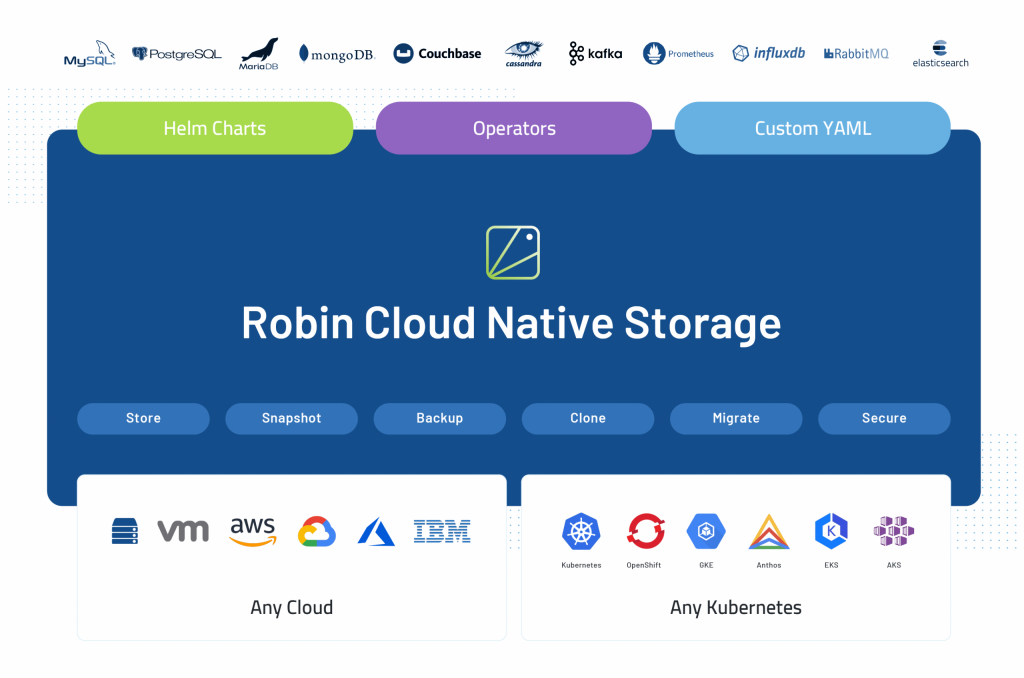Robin.io Adds Free-for-Life Version of Container Storage Platform
Robin.io, a provider of an integrated storage and data management platform for Kubernetes, announced today it is making available a free-for-life edition of its platform dubbed Robin Express.
At the same time, Robin.io is adding support for Helm charts that can now be backed up, migrated or captured as a snapshot as well as making it possible to apply availability policies to distributed databases.
Finally, IT teams can specify data locality for latency-sensitive workloads and in the enterprise edition of the platform pay for the platform based on the amount of storage resources consumed.
Ankur Desai, director of products for Robin.io, says Robin Express provides support for up to five Kubernetes clusters configured with up to 5TB of data. This offering provides access to all the capabilities of the core Robin platform rather than merely providing access to a subset of capabilities, he says.
The Robin platform is a block storage platform for bare-metal platforms that integrates natively with Kubectl, Helm Charts and Operators. It provides support for high availability, snapshots, backups and thin clones and can be deployed on multiple clouds.
 Desai said Robin differentiates itself from other platforms for running stateful applications because it is designed to be programmatically deployed by DevOps teams rather than traditional storage administrators. Robin Express is designed to make it easier for developers to build and launch their first stateful applications on a Kubernetes cluster without necessarily having to get approval from an IT operations team.
Desai said Robin differentiates itself from other platforms for running stateful applications because it is designed to be programmatically deployed by DevOps teams rather than traditional storage administrators. Robin Express is designed to make it easier for developers to build and launch their first stateful applications on a Kubernetes cluster without necessarily having to get approval from an IT operations team.
Datastores such as PostgreSQL, MySQL, MongoDB, Redis, MariaDB, Cassandra, Elasticsearch and others are being deployed more frequently on container platforms because they enable IT teams to streamline the management of compute and storage. Previously, organizations tended to run stateless applications on Kubernetes clusters that stored data on an external system. However, as familiarity with Kubernetes clusters increases, more IT teams are now opting to store data on the cluster itself, Desai says.
Unlike rival storage software, Robin.io is designed to appeal more to DevOps teams that are running an entire Kubernetes environment end-to-end versus having to rely on a separate storage administrator, he says. That approach also makes it easier to unify data and storage management, which Desai notes in many legacy IT environments is still managed as a set of distinct tasks.
Regardless of how IT organizations approach data and storage management in the age of Kubernetes, the one thing that is clear is that data will be more distributed than ever. Kubernetes clusters are now being rolled out from the edge to the cloud. The more uniform those clusters are in terms of how they present storage resources, the easier it becomes to manage data strewn across an extended enterprise.
It’s unclear who will be tasked with managing all that data. However, there’s not much likelihood IT teams are going to dispatch IT staff to manage storage systems in edge computing environments in the wake of the COVID-19 pandemic, especially if that storage can now be managed more easily from afar.




